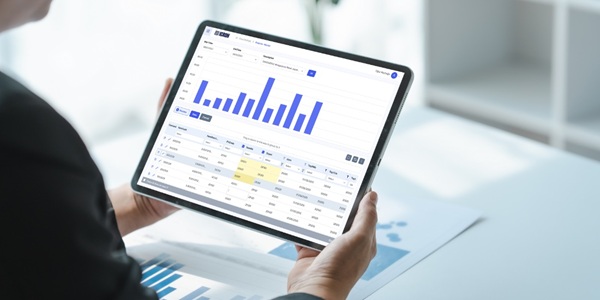
Author: William Citrin
The manufacturing industry is currently undergoing a dramatic, digital transformation, which has seen the introduction and adoption of cutting-edge technologies powered by artificial intelligence (AI), machine learning, the internet of things (IoT), and other Industry 4.0 capabilities.
These new technologies all process and produce an immense amount of data, and manufacturing firms – from the employees on the shop floor to the senior managers in the boardroom – are struggling to cope with this deluge of data, to make sense of it and figure out how to use it to improve their productivity and profitability. Indeed, all this data is essentially useless, unless it can be used to add business value.
Unlocking the real value of data
How can manufacturing companies unlock the real value of all the data they are collecting? To do this, they must be able to utilize this data to make optimized decisions that trigger actions that enable them to meet their key performance indicators (KPIs) and achieve their business goals.
We call this capability “decision-centric optimization.” It sounds simple in theory, but in reality (given the sheer volume of data manufacturing firms generate as well as the complexity of manufacturing operations with their volatile supply and demand dynamics and capacity and resource constraints) it is practically impossible – without the assistance of an algorithm-based Optimized Decision Making solution.
With an Optimized Decision Making solution, manufacturing firms can automatically, instantly transform their supply chain data into optimized decisions that are aligned with their business goals.
Achieving decision-centric optimization
There are five key steps manufacturing firms must take to achieve decision-centric optimization. With an Optimized Decision Making solution, manufacturers can:
Step #1: Collect and compile real-time data from all sources, including IoT devices, back-office systems (ERP, Excel, MES, etc.), and web services.
Step #2: Turn raw data into real-time business data by intelligently collating relevant content.
Step #3: Use the data to run advanced algorithms (including optimization, analytics, and AI), which automatically generate optimal calculations, plans, and projections.
Step #4: Instantly make optimized decisions, driven by optimal calculations, plans, and projections as well as organizational input.
Step #5: Trigger optimized, real-time actions, which are based on optimized decisions and aligned with business objectives.
Algorithm-based Optimized Decision Making solutions, like ICRON, provide a pathway for companies to take these steps and reach a state of decision-centric optimization.
With these solutions, manufacturers can use the flood of data from IoT and other sources to fuel optimized decisions through their organizations and drive improved productivity, delivery performance, and bottom-line results.
If you would like to see ICRON in action, please contact us. If you have enjoyed this blog, you can find more content that you might enjoy here.













